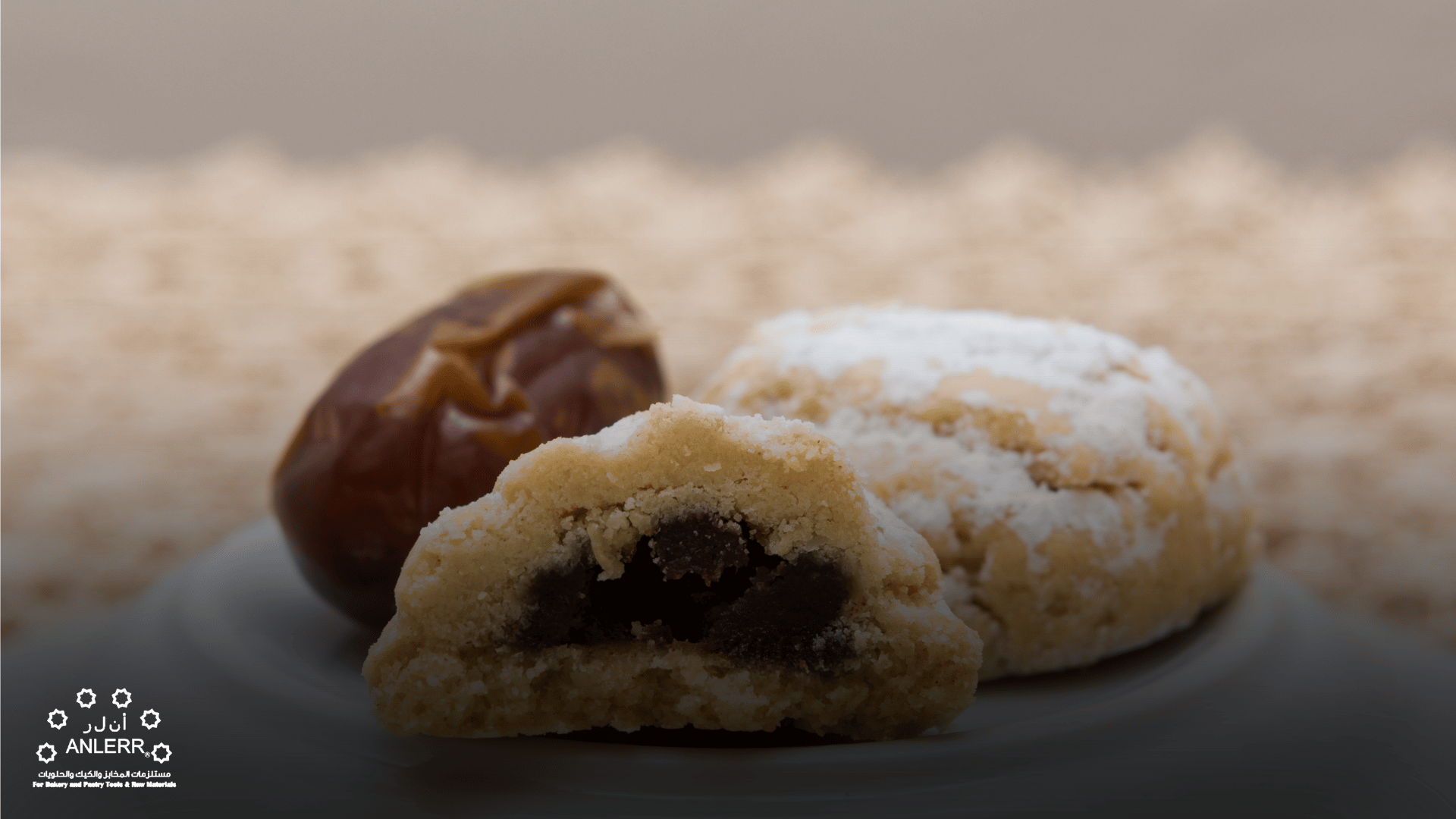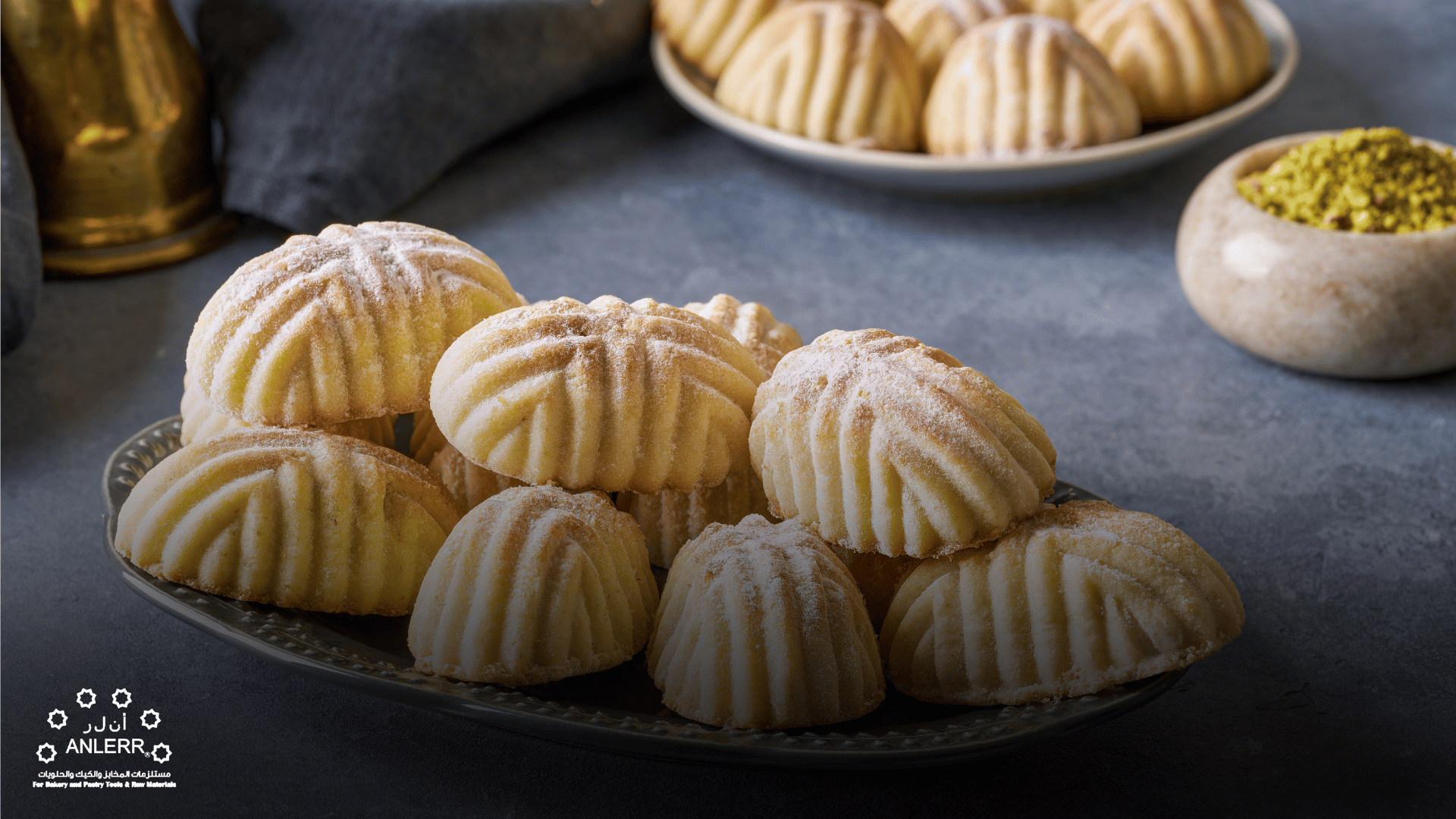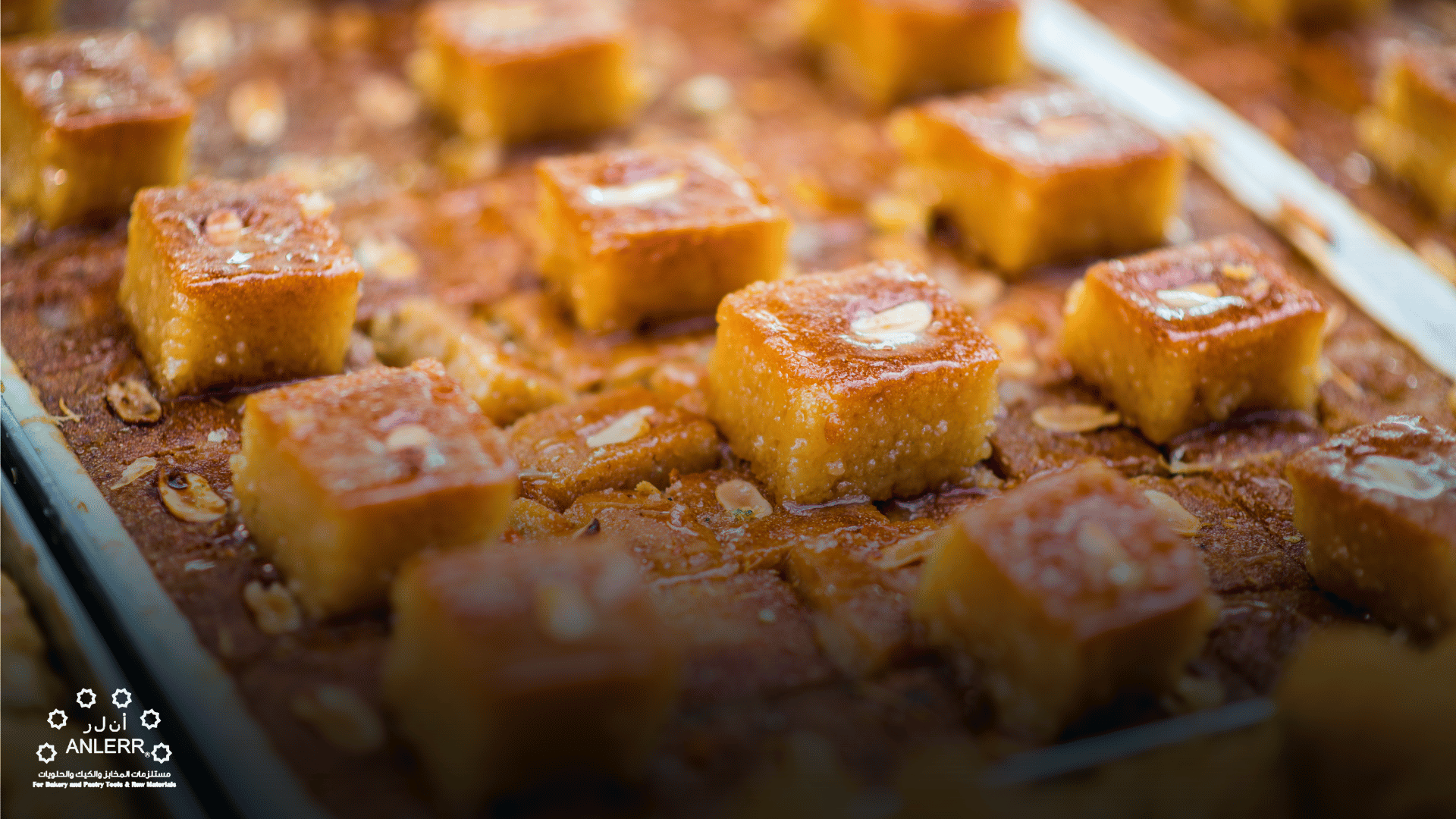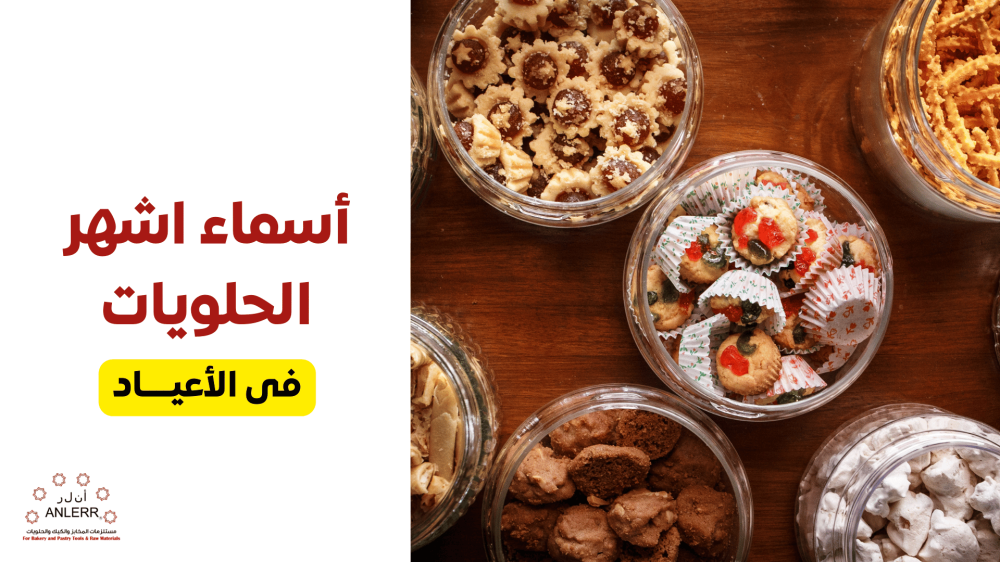Eid sweets are an essential part of Arab celebrations, symbolizing joy, generosity, and deep-rooted traditions. These desserts are known for their rich flavors, featuring dates, nuts, and honey, making them a staple on holiday tables. Whether homemade traditional Arabic sweets or purchased from specialty stores, each variety has its unique charm. In this article, we explore the most famous Arabic sweets for holidays, their origins, key ingredients, and the best occasions to enjoy them.
1. Date Maamoul – A Classic Eid Sweet
Date-filled Maamoul is one of the oldest desserts associated with Arab celebrations. Its history dates back to ancient Egypt, where depictions of these cookies were found in temple carvings. Over time, it has become a staple treat in Islamic holidays and social gatherings.

Main Ingredients & Preparation:
- Made with flour, ghee, milk, yeast, sugar, and maamoul spice, stuffed with date paste flavored with cinnamon and cardamom.
- The dough is kneaded until soft, then filled with dates, pressed into traditional molds, and baked until golden.
Best Occasions to Serve It:
- Primarily prepared for Eid Al-Fitr, symbolizing joy and hospitality.
- Served at weddings and special celebrations, reflecting cultural heritage and family traditions.
2. Maamoul – A Taste of Authenticity for Every Occasion
Maamoul is one of the most famous traditional Arabic sweets, known for its variety of fillings. It is believed to have originated in the Levant (Sham region) and has been prepared for centuries with different regional twists.

Ingredients & Preparation:
- The dough consists of semolina, butter or ghee, sugar, milk, and orange blossom or rose water for a fragrant touch.
- Maamoul is filled with dates, pistachios, or walnuts and shaped using beautifully engraved molds.
Variations & Occasions:
- Typically associated with Eid Al-Fitr and Eid Al-Adha, prepared in large quantities to be shared with family and neighbors.
- Also served at family gatherings and festive occasions as a symbol of warm hospitality.
3. Basbousa – The Golden Dessert for Special Occasions
Basbousa is a rich and moist semolina cake popular across the Arab world, particularly during festive celebrations. It is believed to have originated in Egypt or the Levant before spreading with local variations.

Ingredients & Preparation:
- Made from semolina, sugar, yogurt, butter or ghee, and soaked in sugar syrup after baking to enhance its sweetness.
- Sometimes enriched with coconut, nuts, or cream (ashta) for extra flavor.
Role in Celebrations:
- A staple Ramadan dessert, often served after Iftar with tea or coffee.
- Also enjoyed at weddings, birthdays, and family gatherings, making it an ideal festive treat.
4. Harissa – Similar to Basbousa but with a Unique Twist
Harissa is another famous semolina-based dessert that closely resembles Basbousa but differs in texture and preparation. It is particularly popular in Syria and Lebanon, where it is known for its richer and denser consistency.
Ingredients & Preparation:
- Made with coarse semolina, sugar, yogurt, ghee, and coconut, topped with syrup for added sweetness.
- Typically garnished with whole almonds or pistachios and baked until golden brown.
Occasions for Serving:
- Served at weddings and large feasts as a delicious hospitality treat.
- A favorite Ramadan dessert, providing energy after Iftar.
5. Ghraybeh – Simplicity in Taste and Tradition
Ghraybeh is one of the simplest yet most delicious Arabic sweets, known for its melt-in-the-mouth texture. It dates back to Islamic times, spreading across North Africa, Egypt, and the Levant.
Secrets to Its Success & Ingredients:
- Made with flour, powdered sugar, ghee, and vanilla or orange blossom water, often garnished with pistachios or almonds.
- The key to its success lies in using cold ghee and minimal kneading to maintain its delicate texture.
Why It’s a Favorite Eid Treat:
- A must-have for Eid Al-Fitr and Eid Al-Adha, loved for its lightness and ease of preparation.
- Often served with coffee or tea as a refined dessert for family gatherings.
6. Zalabia – Crispy Fried Sweet Delight
Zalabia is a well-loved deep-fried dessert with a crispy exterior and soft, syrup-soaked interior. Known as Awamat in the Levant and Luqmat Al-Qadi in Egypt, it has a long history in Arab cuisine.
Traditional Preparation:
- Made from flour, water, yeast, and a pinch of salt, left to ferment before deep frying.
- Once golden, it is drenched in sugar syrup or dusted with powdered sugar for extra sweetness.
Why It’s Popular in Celebrations:
- A beloved Ramadan treat, often enjoyed after Iftar.
- A festival and street food staple, served hot and fresh at markets and fairs.
7. Qatayef – The Signature Sweet of Ramadan & Eid
Qatayef is one of the most iconic Ramadan desserts, believed to date back to the Umayyad or Abbasid era, where it was served as a luxurious dish to caliphs.
Filling & Preparation:
- Made from a yeast-based pancake batter, cooked on one side until bubbles form.
- Filled with cream, nuts, pistachios, or sweet cheese, then either fried until crispy or eaten fresh with syrup.
Best Occasions for Serving:
- A symbol of Ramadan, widely enjoyed during Iftar.
- Also popular during Eid and family gatherings, appreciated for its easy preparation and delicious taste.
8. Kunafa – The Queen of Arabic Desserts
Kunafa is one of the oldest and most celebrated Middle Eastern desserts, believed to have originated in the Fatimid or Umayyad era. Over time, it has evolved into multiple variations to suit different tastes.
Types & Preparation:
- Kunafa Noodles: Made from thin pastry strands, filled with cream or cheese, and baked to a golden crisp.
- Soft Kunafa: Dough is ground and baked over ghee, topped with cheese or cream, then soaked in syrup.
- Crunchy Kunafa: A combination of the two textures, offering both crispiness and softness.
Significance in Celebrations:
- A signature Eid dessert, served warm with nuts or chocolate.
- A luxurious treat at weddings and feasts, symbolizing indulgence and hospitality.
9. Muhallabia – A Light & Creamy Festive Dessert
Muhallabia is a delicate and creamy milk pudding, favored across the Arab world for its smooth texture. It dates back to the Umayyad era, where it was a premium dish for royalty.
Key Ingredients & Variations:
- Made with milk, cornstarch, sugar, and rose water or vanilla, often garnished with pistachios or almonds.
- Available in different flavors, such as cocoa, cinnamon, or fruit-infused versions.
Best Occasions to Serve It:
- A preferred Suhur dessert in Ramadan, as it is light and easy to digest.
- Served at weddings and birthdays, enjoyed by both children and adults.
10. Halawet El Jibn – The Unique Syrian Delight
Halawet El Jibn is a specialty Syrian dessert that originated in Hama and spread across the Arab world for its rich, cheesy texture.
What Makes It Unique:
- Made from semolina, sweet cheese, rose water, and sugar, giving it a soft, elastic consistency.
- Filled with fresh cream (ashta), rolled into logs, and topped with pistachios and syrup.
Best Occasions for Serving:
- A luxurious Eid and family gathering dessert.
- A refined choice at banquets and weddings, loved for its light and sweet balance.
Conclusion
Arabic sweets are more than just desserts – they represent heritage, celebrations, and togetherness. Whether homemade or store-bought, they hold a special place in cultural traditions.
At Anlerr, we provide premium baking supplies and ingredients, including almond flour, natural sweeteners, and baking tools, helping you create the perfect Eid desserts.
Enjoy your celebrations with Anlerr's high-quality products

